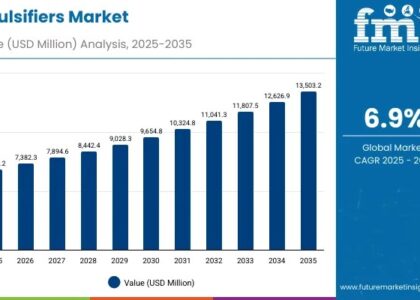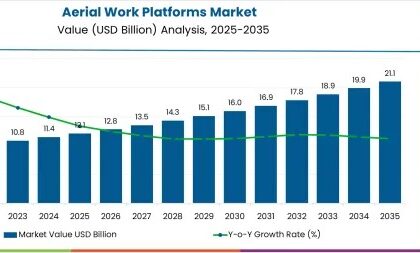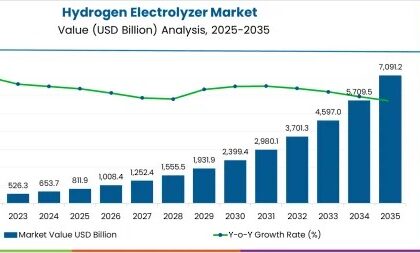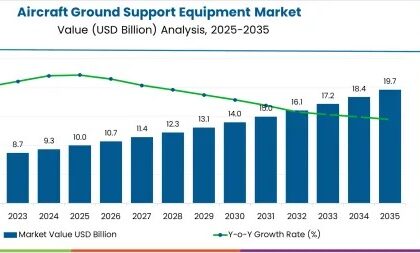The fertilizer additive market has long been dominated by traditional chemical enhancers that improve fertilizer efficiency and effectiveness. However, recent advancements in agricultural technologies have paved the way for more sustainable solutions. One of the most intriguing developments in this space is the emergence of biodegradable fertilizer additives. This content piece will explore this innovative aspect of the market, focusing on biodegradable enhancers and their pivotal role in shaping a more eco-friendly future for agriculture. By delving into the science behind these additives, the benefits they offer, and their growing influence in global markets, this piece will provide an in-depth understanding of how the fertilizer additive market is evolving.
𝐌𝐚𝐤𝐞 𝐈𝐧𝐟𝐨𝐫𝐦𝐞𝐝 𝐃𝐞𝐜𝐢𝐬𝐢𝐨𝐧𝐬 – 𝐀𝐜𝐜𝐞𝐬𝐬 𝐘𝐨𝐮𝐫 𝐒𝐚𝐦𝐩𝐥𝐞 𝐑𝐞𝐩𝐨𝐫𝐭 𝐈𝐧𝐬𝐭𝐚𝐧𝐭𝐥𝐲! https://www.futuremarketinsights.com/reports/sample/rep-gb-6818
Understanding Fertilizer Additives and Their Purpose in Agriculture
Fertilizer additives have long been a crucial component in enhancing the efficiency of fertilizers. These substances, which are mixed with fertilizers, serve various purposes such as improving nutrient uptake, enhancing soil health, and mitigating environmental risks associated with over-fertilization. Common additives include nitrification inhibitors, urease inhibitors, and surfactants. While these traditional additives have been widely used, there is a growing need for more sustainable alternatives to address the environmental impact of fertilizers, especially in the context of global concerns about soil degradation and water pollution.
The Rise of Biodegradable Fertilizer Additives
Biodegradable fertilizer additives are a new frontier in the industry. These additives, unlike their synthetic counterparts, decompose naturally in the soil without leaving harmful residues. Their primary purpose is to enhance the nutrient release process while minimizing the ecological footprint of fertilizers. Biodegradable additives can also contribute to soil regeneration, promoting healthier ecosystems. An example of this innovation is the use of biodegradable polymers that encapsulate nutrients and release them slowly over time, reducing the risk of nutrient leaching and improving fertilizer efficiency.
Key Benefits of Biodegradable Fertilizer Additives
The integration of biodegradable additives into the fertilizer industry offers several benefits. First, they significantly reduce environmental pollution by minimizing the impact of fertilizer runoff. Fertilizer runoff is a major cause of water contamination and eutrophication in water bodies. By using biodegradable additives that control nutrient release, the likelihood of excess nutrients entering water sources is reduced. Second, biodegradable additives enhance soil structure and fertility. They help in retaining moisture and nutrients in the soil, thus promoting sustainable farming practices. Furthermore, biodegradable additives improve the overall efficiency of fertilizers by ensuring that nutrients are delivered precisely when needed, leading to better crop yields with less fertilizer usage.
𝐔𝐧𝐥𝐨𝐜𝐤 𝐂𝐨𝐦𝐩𝐫𝐞𝐡𝐞𝐧𝐬𝐢𝐯𝐞 𝐌𝐚𝐫𝐤𝐞𝐭 𝐈𝐧𝐬𝐢𝐠𝐡𝐭𝐬 – 𝐄𝐱𝐩𝐥𝐨𝐫𝐞 𝐭𝐡𝐞 𝐅𝐮𝐥𝐥 𝐑𝐞𝐩𝐨𝐫𝐭 𝐍𝐨𝐰: https://www.futuremarketinsights.com/reports/fertilizer-additives-market
The Science Behind Biodegradable Additives
The science behind biodegradable fertilizer additives involves advanced chemical engineering and material science. Researchers have developed several types of biodegradable substances, including starch-based polymers, proteins, and lipids, that can encapsulate fertilizers and release them gradually over time. These polymers break down through natural biological processes in the soil, converting into harmless byproducts like carbon dioxide, water, and organic matter. For instance, scientists have successfully developed biodegradable urease inhibitors that prevent the rapid conversion of urea into ammonia, ensuring that nitrogen is available to crops for a longer period without volatilizing into the atmosphere.
Market Trends and Growth Opportunities
The market for biodegradable fertilizer additives is growing at a rapid pace. As agriculture moves towards more sustainable practices, demand for these eco-friendly alternatives is increasing. Global awareness of environmental issues and stricter regulations on chemical fertilizers are driving this shift. Biodegradable additives also align with the growing consumer demand for organic and sustainably produced food, which is gaining popularity worldwide. In 2024, the biodegradable fertilizer additives market is expected to reach a significant market share in regions like North America and Europe, where sustainable farming practices are being adopted at a faster rate. Additionally, emerging markets in Asia-Pacific are beginning to show interest in these products as awareness of environmental issues grows.
Challenges and the Future of Biodegradable Fertilizer Additives
Despite the promising potential of biodegradable additives, there are still challenges that need to be addressed. One of the main issues is the cost of production, as biodegradable additives are generally more expensive to produce compared to traditional chemical additives. Additionally, there is a need for further research to optimize the performance of these additives under different environmental conditions. As the technology matures, however, it is expected that economies of scale will drive down costs, making biodegradable additives more accessible to farmers globally.
Fertilizer & Agrochemicals Industry Analysis: https://www.futuremarketinsights.com/industry-analysis/fertilizer-and-agrochemicals
The Path Forward for Biodegradable Additives in the Fertilizer Market
Biodegradable fertilizer additives represent a promising solution to the environmental challenges posed by conventional fertilizers. Their ability to enhance nutrient efficiency while reducing environmental harm is reshaping the fertilizer additive market. As research and development in this area continue to evolve, it is likely that biodegradable additives will become a mainstream solution in sustainable agriculture. For farmers and the agriculture industry as a whole, adopting these innovative solutions will not only contribute to greater crop yields but also support the transition to a more sustainable and eco-friendly agricultural system.
Key Segments
By Product Type:
By product type, the industry is segmented into anti-caking agents, dust suppressors, drying agents, granulation agents, and others.
By Application:
By application, the industry is categorized based on key applications: N (Nitrogen), P2O5, K2O, and others.
By Region:
By region, the industry spans across North America, Latin America, Western Europe, Eastern Europe, South Asia and Pacific, East Asia, and the Middle East & Africa.
About Future Market Insights (FMI)
Future Market Insights, Inc. (ESOMAR certified, recipient of the Stevie Award, and a member of the Greater New York Chamber of Commerce) offers profound insights into the driving factors that are boosting demand in the market. FMI stands as the leading global provider of market intelligence, advisory services, consulting, and events for the Packaging, Food and Beverage, Consumer Technology, Healthcare, Industrial, and Chemicals markets. With a vast team of over 400 analysts worldwide, FMI provides global, regional, and local expertise on diverse domains and industry trends across more than 110 countries.
Join us as we commemorate 10 years of delivering trusted market insights. Reflecting on a decade of achievements, we continue to lead with integrity, innovation, and expertise.
Contact Us:
Future Market Insights Inc.
Christiana Corporate, 200 Continental Drive,
Suite 401, Newark, Delaware – 19713, USA
T: +1-347-918-3531
For Sales Enquiries: sales@futuremarketinsights.com
Website: https://www.futuremarketinsights.com
LinkedIn| Twitter| Blogs | YouTube






